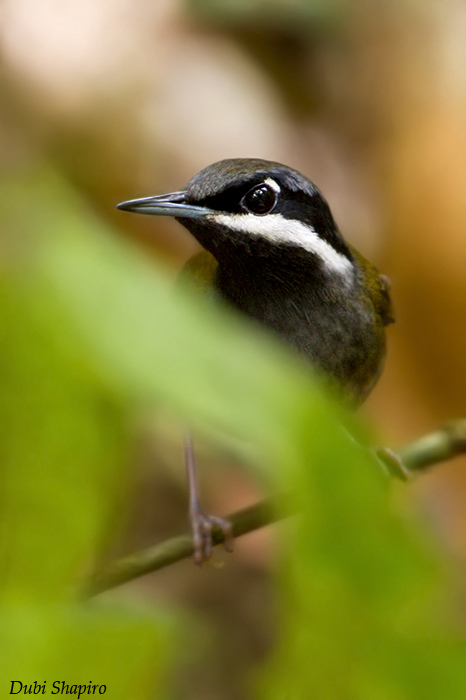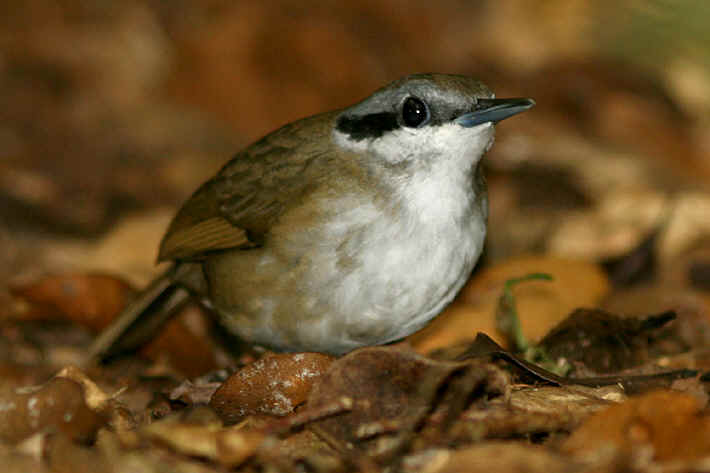
Mystacornis crossleyi
SUBFAMILY
Timaliinae
TAXONOMY
Bernieria crossleyi Grandidier, 1870, Madagascar. Monotypic.
Position within family unclear.
OTHER COMMON NAMES
French: Mystacornis; German: Mystacornis.
PHYSICAL CHARACTERISTICS
6.3 in (16 cm). Compact-bodied, with relatively long bill. Sexes
strongly dimorphic. Male distinguished by black throat and
gray crown, while female’s white throat and brown crown gives
it a markedly different appearance. Both sexes have a broad
white malar stripe (“moustache”), far more noticeable in male,
as well as black band through eye, and small white spot above
eye. Mantle, wings, and tail brown, belly gray, off-white undertail
coverts. Eyes dark.
DISTRIBUTION
Eastern Madagascar.
HABITAT
Understory of primary evergreen humid forests.
BEHAVIOR
Found either individually or in family units. Adult males do
not tolerate the presence of others, and respond aggressively to
others’ vocalizations. (Unlike many other babblers, fledged juveniles
do not resemble adults, but are instead uniform rufous.)
FEEDING ECOLOGY AND DIET
Walks around on forest floor, in fairly open places, looking for
insects.
REPRODUCTIVE BIOLOGY
Monogamous. Cup-shaped nest built from twigs, close to the
ground.
CONSERVATION STATUS
Not threatened, but habitat dependent. Range includes several
reserves.
SIGNIFICANCE TO HUMANS
A target species for ecotourists.
Photo Gallery of - Crossley’s babbler




 Animalia Life
Animalia Life